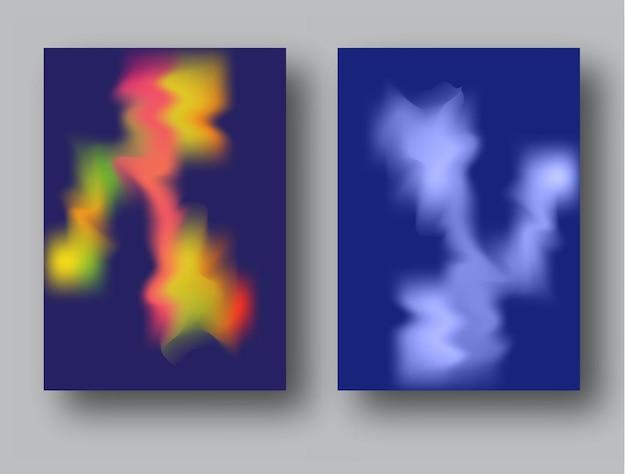When it comes to glue, there are so many options available in the market, each with its own set of characteristics and uses. One popular adhesive that has gained a lot of attention is Gorilla Glue. Known for its incredible strength and versatility, Gorilla Glue has become a go-to option for DIY enthusiasts and professionals alike. But what happens when this powerful adhesive is exposed to heat? Is Gorilla Glue toxic when heated? In this blog post, we will explore the effects of heat on Gorilla Glue and whether it poses any potential risks to the users.
If you are a frequent user of Gorilla Glue, you might have wondered what happens when this adhesive is subjected to high temperatures. Does it release toxic fumes or become harmful to health? Can it withstand the heat of an oven or other heat-intensive applications? These are common questions that arise when it comes to using Gorilla Glue in situations where heat is involved. In this article, we will delve into the world of Gorilla Glue and explore its heat resistance properties. So, let’s find out how this popular adhesive performs when things start to heat up!
Is Gorilla Glue Toxic When Heated
When it comes to adhesive solutions, Gorilla Glue is undoubtedly one of the top choices for its strength and versatility. But what about when this glue encounters heat? Is Gorilla Glue toxic when heated? Let’s delve into this fascinating topic and uncover the truth behind these burning questions.
The Chemistry Behind Gorilla Glue
To fully understand what happens to Gorilla Glue when it meets heat, we need a crash course in its chemistry. Gorilla Glue is a polyurethane adhesive that undergoes a curing process when exposed to moisture. This process creates a durable and long-lasting bond that can glue almost anything together.
The Heat Test
Now, let’s heat things up and see how Gorilla Glue reacts. When subjected to high temperatures, Gorilla Glue experiences some changes. It begins to decompose, releasing a combination of toxic fumes and irritants. Inhaling these fumes can cause respiratory discomfort, headaches, and even dizziness.
The Dangers of Heating Gorilla Glue
Heating Gorilla Glue not only releases harmful fumes but can also lead to the production of smoke and potentially toxic byproducts. These byproducts can pose a danger to both humans and pets if inhaled or ingested. Furthermore, overheating Gorilla Glue can damage the surfaces it is applied to, compromising its effectiveness as an adhesive.
Proper Usage and Precautions
To ensure your safety and the well-being of those around you, it is essential to follow some basic guidelines. Firstly, avoid exposing Gorilla Glue to excessive heat sources such as open flames or direct sunlight. Store the adhesive in a cool, dry place away from any potential heat sources.
Ventilation, Ventilation, Ventilation
When working with Gorilla Glue, always maintain proper ventilation. Performing tasks in a well-ventilated area, like opening windows or using fans, helps dissipate any fumes that may be produced. Remember, fresh air is the best friend of any DIY enthusiast!
Protective Gear for the Win!
Lastly, don’t forget to gear up! Wearing gloves and a mask while handling Gorilla Glue minimizes the risk of direct contact with your skin and prevents inhalation of any potentially harmful fumes. Safety glasses are also highly recommended to protect your eyes from any accidental splashes.
In Summary
In conclusion, Gorilla Glue can indeed release toxic fumes and irritants when exposed to heat. Proper precautions, such as avoiding heat sources, working in well-ventilated areas, and using protective gear, should always be followed to prevent any adverse effects. Remember, a successful DIY project includes not only the right adhesive but also the right safety measures. Stay safe, glue responsibly, and let your creativity soar!
FAQ: Is Gorilla Glue Toxic When Heated
How long does it take for Gorilla Glue to fully cure
Gorilla Glue typically takes about 24 hours to fully cure. However, the curing time can vary depending on factors such as temperature and humidity.
Can JB Weld withstand high heat
Yes, JB Weld is known for its ability to withstand high heat. It can withstand temperatures up to 600 degrees Fahrenheit (315 degrees Celsius), making it suitable for a variety of high-heat applications.
Is Gorilla Glue safe to use in the oven
No, Gorilla Glue is not recommended for use in the oven or any high-heat applications. It can release toxic fumes when exposed to high temperatures, posing a potential health risk.
Is Gorilla Glue toxic after drying
No, Gorilla Glue is not toxic after drying. Once the glue has fully cured, it is safe to handle and does not release any toxic substances.
Does heat remove Gorilla Glue
Yes, heat can help soften and remove Gorilla Glue. Applying heat, such as with a hairdryer or heat gun, can help loosen the bond created by the glue, making it easier to remove.
What softens Gorilla Glue
Acetone is the most effective solvent for softening and removing Gorilla Glue. It can break down the adhesive properties of the glue, allowing for easy removal.
Is 3M tape heat resistant
Yes, 3M tape is known for its heat-resistant properties. Depending on the specific type of 3M tape, it can withstand temperatures ranging from 200 to 500 degrees Fahrenheit (93 to 260 degrees Celsius).
What happens if you put superglue in the oven
Putting superglue in the oven can be dangerous and should never be done. Superglue releases toxic fumes when exposed to heat, and it can easily catch fire, leading to potential hazards.
Is PVA heat resistant
No, PVA (Polyvinyl Acetate) glue is not heat resistant. It is not recommended for use in applications where it will be exposed to high temperatures, as it can soften, lose its adhesive strength, and potentially melt.
What type of glue is heat resistant
There are several types of glue that are heat resistant, such as epoxy adhesives, silicone-based adhesives, and certain cyanoacrylate (super glue) formulas. These glues are designed to withstand high temperatures without losing their bonding strength.
Is super glue food safe after it dries
No, super glue is not safe for direct contact with food, even after it dries. Super glue is not intended for food-related applications and may contain chemicals that could pose health risks if ingested.
What does Gorilla Glue not stick to
Gorilla Glue is known for its exceptional bonding strength, but it does not adhere well to surfaces such as polyethylene, polypropylene, and certain types of plastics. It is always recommended to test the glue on a small, inconspicuous area before applying it to ensure proper adhesion.
What is the strongest glue on the market
There are several strong adhesives on the market, but one of the strongest is epoxy adhesive. Epoxy forms a durable and extremely strong bond, making it ideal for a wide range of applications.
Will rubbing alcohol remove Gorilla Glue
Rubbing alcohol can help remove some cured Gorilla Glue from surfaces by softening the glue. However, it may not be as effective as acetone, which is the recommended solvent for removing Gorilla Glue.
Is all Gorilla Glue heat resistant
Not all Gorilla Glue products are heat resistant. It is important to check the specific product’s label or description to determine if it is suitable for high-heat applications. Using the wrong Gorilla Glue product in a high-heat situation can result in adhesive failure.
What happens if Gorilla Glue is heated
If Gorilla Glue is heated, it can release toxic fumes and potentially catch fire. It is important to use Gorilla Glue in a well-ventilated area and avoid exposing it to high temperatures.
What removes Gorilla Glue
Acetone is the most effective solvent for removing Gorilla Glue from surfaces. It is important to follow safety precautions and use acetone in a well-ventilated area.
Will Gorilla Glue come off skin naturally
Gorilla Glue will not come off skin naturally. If you accidentally get Gorilla Glue on your skin, it is best to carefully peel or roll the glue away rather than forcefully removing it, as pulling can cause skin irritation.
What glue is best for high heat
Epoxy adhesives are commonly used for high-heat applications. They can withstand temperatures ranging from 200 to 600 degrees Fahrenheit (93 to 315 degrees Celsius), depending on the specific formulation.
How do you fix ceramic in a food-safe manner
To fix ceramic in a food-safe manner, you should use a food-safe epoxy specifically designed for ceramic repairs. These epoxies are formulated to be non-toxic and safe for contact with food.
What glue can I use on an oven door
To repair or adhere items to an oven door, you should use a high-temperature adhesive specifically designed for oven applications. These adhesives can withstand the heat generated by the oven without losing their bonding strength.

